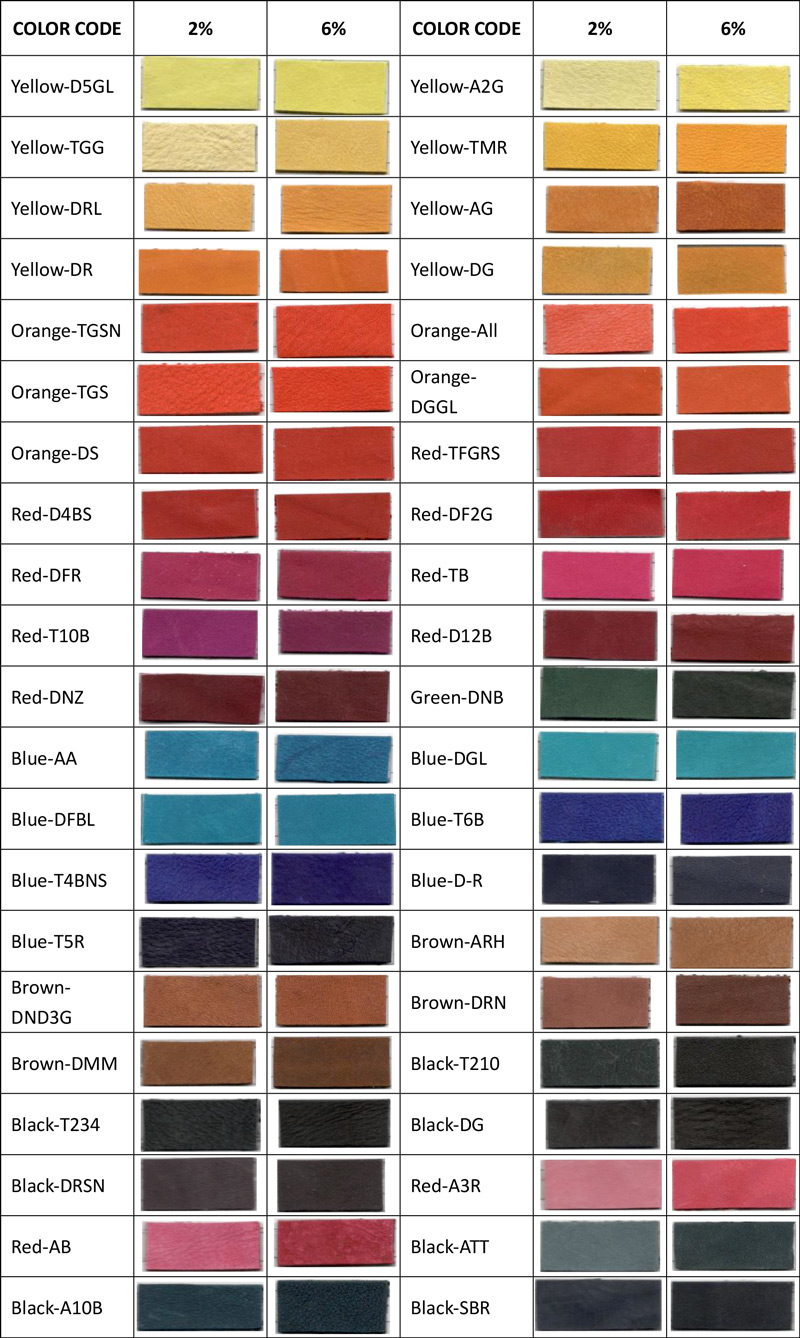The relationship between the dye structure and its performance properties.
Introduction
The coloration of leather is typically made with azo dyes and it is interesting to take a deeper look at the factors that allow us to understand these dyes and the process of dyeing leather. While a considerable amount on dyes and dyeing properties has been written over time it has often been out-dated due to new legislation or tannery needs in terms of leather performance. Here we will attempt to bring together the ideas regarding leather dyes as used today and how the structural properties influence the performance properties. The theory being that if one needs specific fastness characteristics one can then use the structure that best meets these needs.
An overview of the future trends in dyes and the properties they will need to fulfill will also be presented.

Coloring agents are those substances that absorb light in the visible wavelength region of 400 – 700 nm. Hence they appear colored to our eyes. These coloring agents can be either organic or inorganic in nature. We will consider only the organic coloring agents here and from these only those that come under the definition dyes. That is, those organic compounds which are soluble in the medium they are applied to the substrate, in this case leather dyes applied in water.

The vast majority of dyes used today for dyeing leather fall into the “azo dyes” category. Some 70% of all leather (and textile) dyes listed in the literature have the azo chromophore as the reason for their colour. In practice today more than 90% of all dyed leather will be coloured with dye(s) containing the azo chromophore. The “azo dyes” have become a much talked about subject, since the introduction of legislation in Germany in 1995 banning the use of a small number of azo dyes that could split under reductive conditions to release toxic aromatic amines. Uninformed comments, especially in the media, about the toxic nature of azo dyes in general have in many instances lead to requests from retailers for textile and leather clothes dyed “without using azo dyes”. Such requests are based on ignorance and are misleading for the tanner and dye supplier, since they are a wrong interpretation of the actual situation. It is worth reinforcing again that the German ban on using certain azo dyes that split to release specific toxic aromatic amines, relates only to a very small number of dyes and that the majority of the azo dyes can be used without any grounds for concern. Any reputable dye supplier does not use such amines in their production.

An azo dye is made by coupling an aromatic amine with another aromatic component. A very simple schematic example for the formation of a mono-azo dye is as follows:
What are dye performance requirements today? For quality leathers the leather tanning industry has over recent times tended away from focussing almost exclusively on chrome tanned leather and specifying just the leather dyeing properties of light and wet fastness. Today there is a strong demand for other fastness properties such as migration into PVC and migration into a lacquer finish, which now often have priority before wet fastness and light fastness. Other new properties like stability of colour to climate changes and temperature are also gaining in importance, especially for the car interior requirements.

